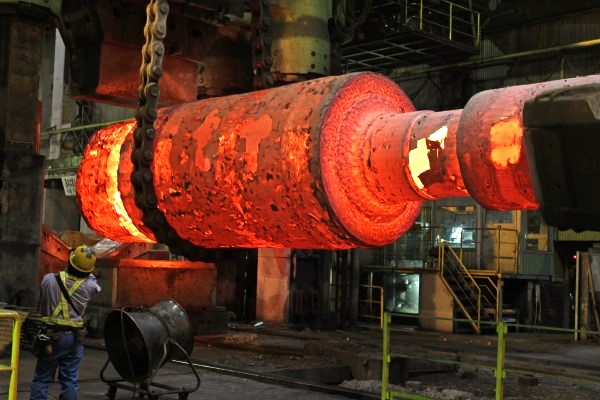At a meeting of the board of directors following the general assembly, HIGASHIHARA Toshiaki (chairman, Hitachi, Ltd.) was elected vice chairman, and MASUI Hideki (head of TEPCO’s Nuclear Power & Plant Siting Division) was elected president.
At the opening of the assembly, Chairman MIMURA Akio said, “Nuclear power is a key baseload power source capable of supplying energy stably and efficiently, at an affordable operating cost—a stable quasi-domestic decarbonization source—and will contribute to the building of a robust, long-term energy supply-and-demand structure.”
Referring to the next Strategic Energy Plan, currently under deliberation by the national government toward its issuance, Chairman Mimura said that “the maximum, sustained use of nuclear power and the early start of a new nuclear build must be clearly included in the plan.”
He then pointed to the following four items as “voices from the industry”:
- Using existing reactors to the maximum extent.
- Maintaining and strengthening nuclear supply chains.
- Establishing a business environment enabling operators to make necessary investment decisions on the building of new reactors.
- Promoting public understanding.
As for the use of existing reactors, Chairman Mimura referred to the need to improve capacity factors, including via the restart of suspended reactors, long-cycle operations, increased online maintenance (OLM), and output improvements. Concerning the construction of new reactors, he expressed concern for a substantial loss of “foreseeability” for private nuclear operators, and called for the creation of a business environment enabling nuclear operators to deal with the issues of investment returns and financing, and to make timely investment decisions that take into account the fact that construction lead times can be on the order of 20 years.
Meanwhile, in the area of the nuclear fuel cycle and related businesses, the Rokkasho Reprocessing Plant is expected to be completed by the end of the year. A literature survey toward the selection of a high-level radioactive waste (HLW) geological disposal site was begun at Genkai Town in Saga Prefecture, Kyushu. Chairman Mimura reiterated his belief that the reprocessing plant and MOX fuel plant, owned by Japan Nuclear Fuel Ltd. (JNFL), are the “key points in the fuel cycle.” Work toward their completion is being steadily carried out.
Regarding the backend business, he said that the nuclear industry would cooperate closely with the national government and the Nuclear Waste Management Organization of Japan (NUMO)—emphasizing the position of the nuclear industry that it would consistently support the activities.
In comments as an assembly guest, SAITO Ken, Japan’s head of the Ministry of Economy, Trade and Industry (METI), referring to recent energy circumstances, including huge amounts of money flowing out of the country, said that Japan “is facing its greatest challenge since the end of the war.” He then went on to declare that “use of nuclear power is essential” in order to achieve a stable energy supply and accomplish the goal of a Green Transformation (GX).
At the same time, Minister Saito reiterated the need to “use nuclear energy in a self-disciplined manner, with safety as the top priority, keeping always in mind reflections on the nuclear accident at Fukushima Daiichi.” He then enumerated issues on which the government and the nuclear industry should cooperate, as follows: maintaining and strengthening supply chains, developing human resources, strengthening international competitiveness, and establishing a business environment.
Toward the issuance of the next Strategic Energy Plan, the minister said that it was important that a sense of crisis be felt by not only the government but also electric power companies, industry, and finance, so that they fulfill their respective roles in light of both the future increase in electricity demand and the need for large-scale investment.
Next to speak was another assembly guest, HONDA Akiko, parliamentary vice-minister of the Ministry of Education, Culture, Sports, Science and Technology (MEXT). From her position of responsibility for R&D and human resource development, she expressed high hopes for the new research reactor to be created at the Monju site, as well as for the research reactor JRR-3 and the experimental fast reactor Joyo, the last two owned by the Japan Atomic Energy Agency (JAEA). She asked the industry for its understanding and support.
On June 19, JAIF’s new President Masui released an inaugural comment in which he declared his concern for the current state of nuclear power in Japan, where only 12 of the 33 existing NPPs are in service—only about a third.
Toward the issuance of the next Strategic Energy Plan, he said that JAIF would urge the government to have the plan state clearly the necessity not only of restarting existing plants, but also of building new and replacement NPPs to deal with expected increases in electricity demand from the IT sector and meet decarbonization objectives. He also said the plan should state the necessity of creating a business environment that would enable those things.











